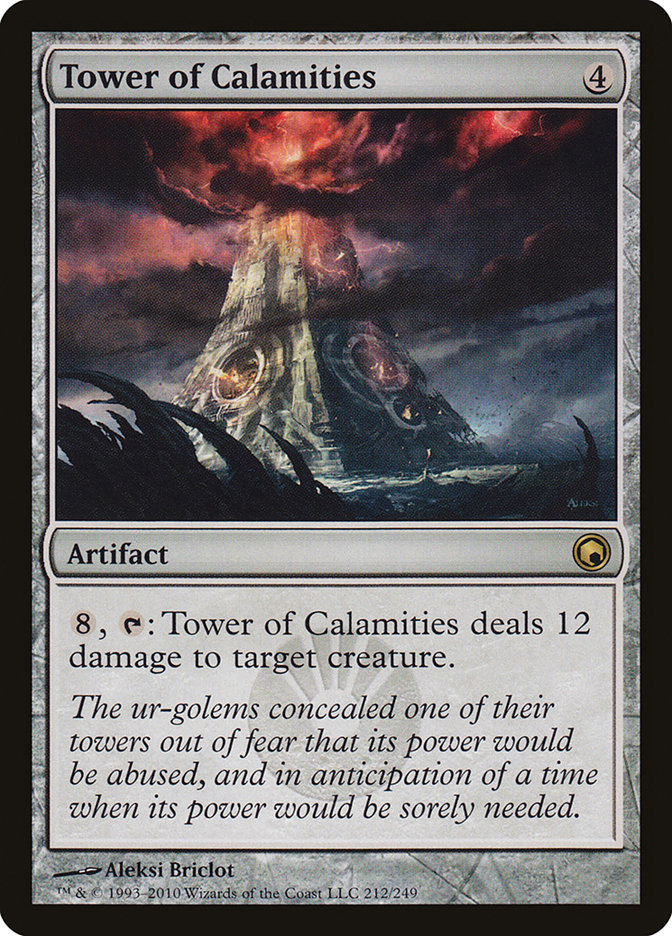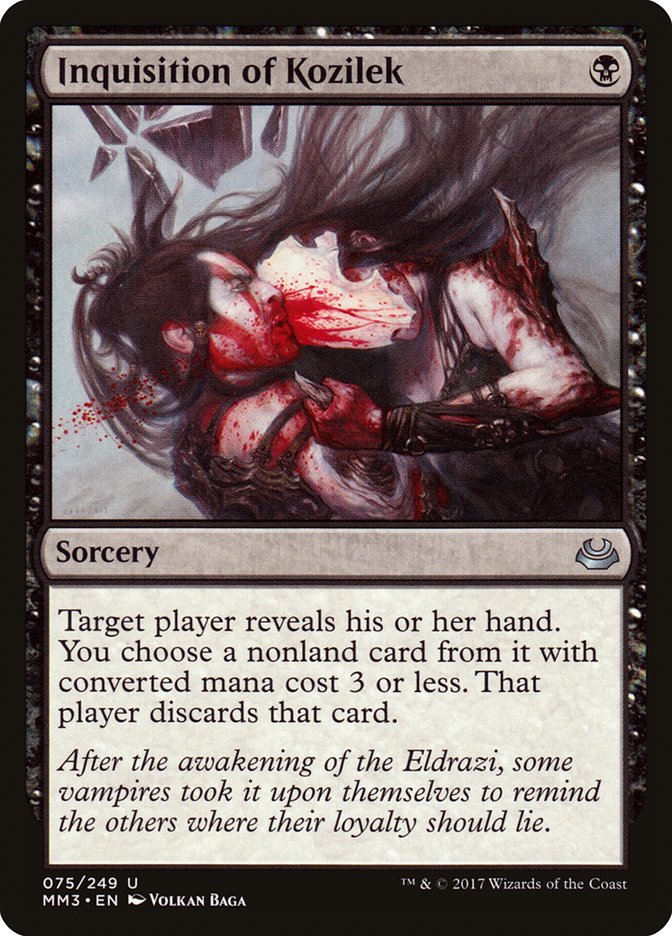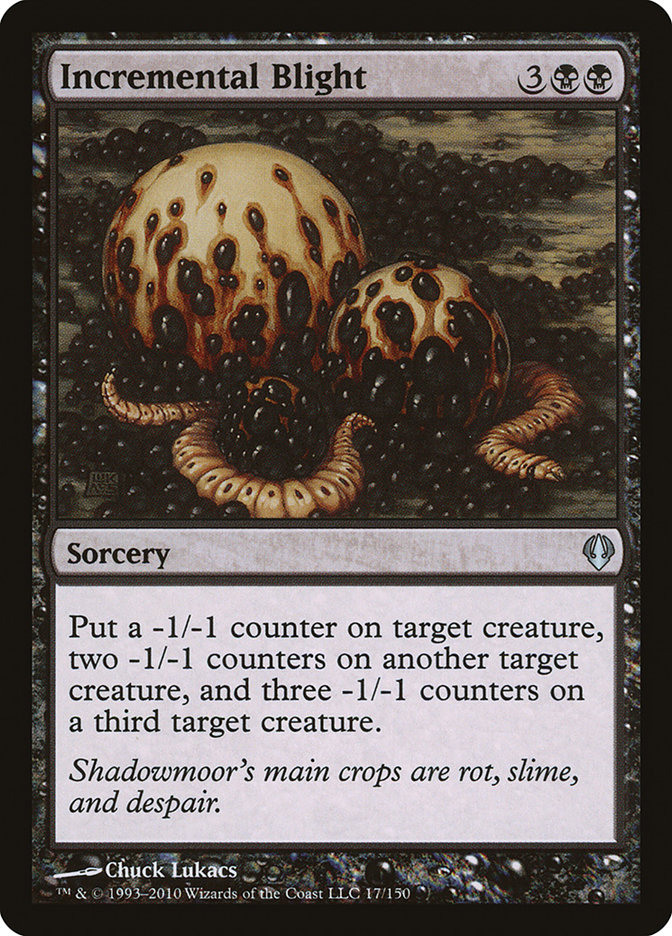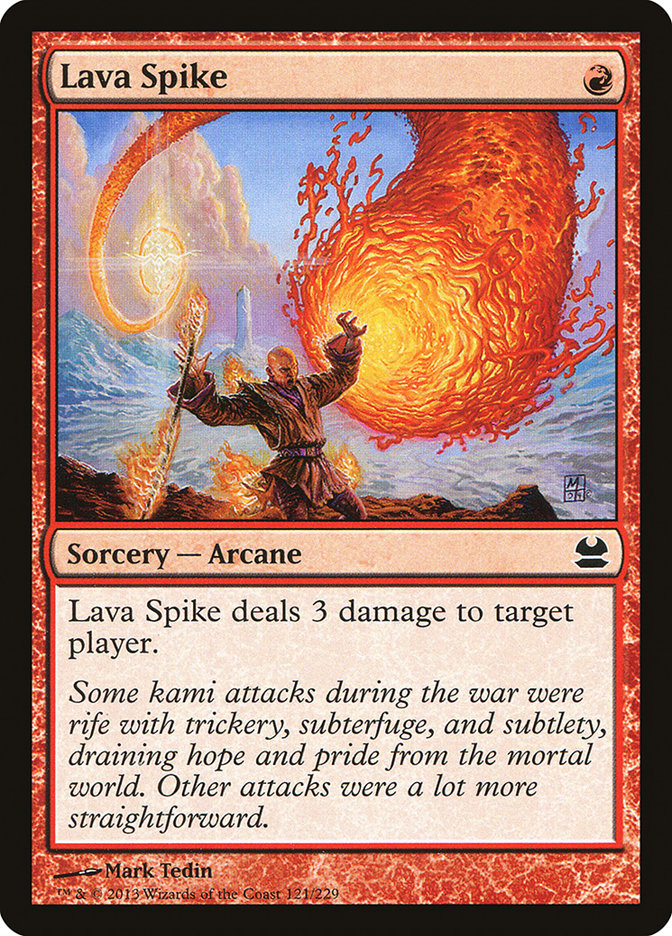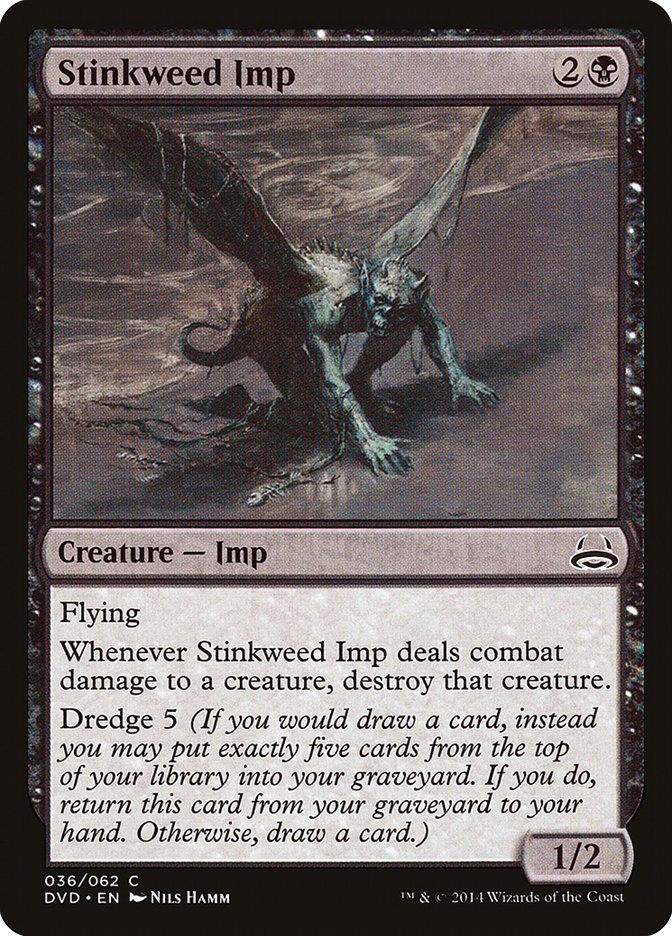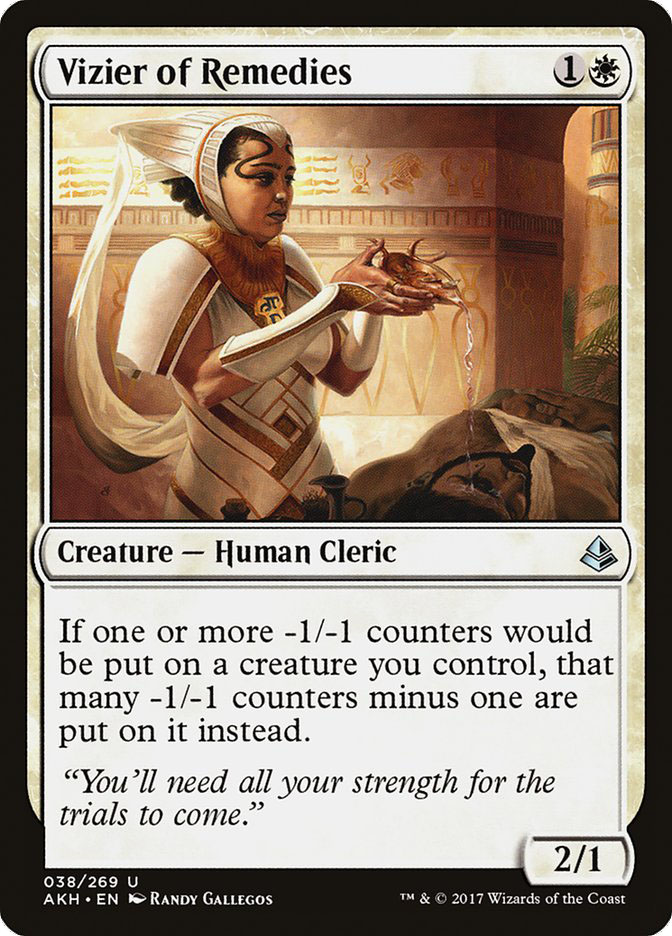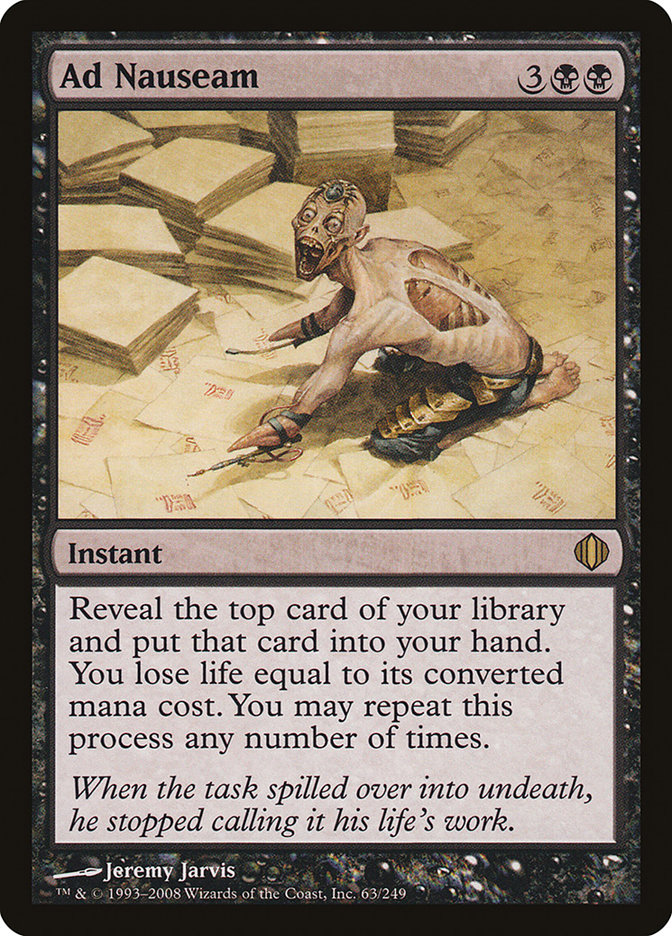“The key to that matchup is establishing your clock early.”
“You can’t sideboard out too many of your creatures; you still have to be able to apply pressure in post-sideboard games.”
We hear statements like these all the time. The phrases “pressure” and “a clock” are bandied about so often that they are practically Magic buzzwords at this point. And in the process of becoming so popular, they have lost some of their nuances. For the most part these days, all using one of these phrases does is call to mind the basic idea that, in order to not lose a game of Magic, you do at some point have to win it. Don’t get me wrong; this idea is certainly an important one. Still, I think we can get more meaning out of these two phrases.
The Aggression / Disruption Balance
But before we can delve into those additional layers of meaning, it’s important to make sure we fully understand the current usage.
The most common context for both phrases is the discussion of the matchup between two decks that do not compete on the same axis. Most frequently, this means a combo deck versus a creature deck. These are the matchups where creature pilots can get so caught up in stopping the combo deck from going off that they overload on disruption and find themselves losing very late in the game because they were unable to close out the game before the combo deck overcame their disruption.
When two decks that do compete on the same axis play against each other, their match of Magic is an awful lot like a game of tug-of-war. Two creature decks will play out their creatures and remove those of their opponent, seeking to develop a stronger battlefield presence and constantly working at tugging the rope closer and closer to their side. Two control decks will maneuver around each other, countering spells and drawing cards, each seeking to perfectly sculpt their hand at the expense of their opponent. In these matchups, one player’s position is judged relative to the other’s and their goals are directly opposed.
But what we care about today are the matchups where decks aren’t playing on the same axis. Instead of a tug-of-war, think of these games of Magic as a race to stack a Jengatower. First player to get their tower completely built wins, but there’s a twist. One player’s tower is half the size of the other player’s, but the player with the larger tower can chuck their pieces across the table to knock over the opposing tower before it’s complete, forcing their opponent to rebuild and buying themselves some more time to build their own.
The delicate balance between building your own tower and attempting to knock down your opponent’s is what this talk of having pressure and putting your opponent on a clock is all about. But it really is a very delicate balance that needs to be struck, and the exact ratio changes from matchup to matchup. To talk intelligently about how to attain the necessary balance, we need to get more nuance out of our buzzwords. So, let’s hone in on the differences between establishing a clock and applying pressure and then figure when we’d want to do one over the other.
Clocking Them
To state that your intention is to put your opponent on a clock is to state that your absolute first priority is to kill them. To put this in terms of the tower-building game, you are devoting the lion’s share of your attention to building your own tower. Sure, every now and then you might half-heartedly throw a block at your opponent’s tower, but only when doing so won’t cause you to assemble yours more slowly.
Last week, I wrote about the Abzan Traverse deck I played at #SCGBALT. As a G/B deck in Modern, Abzan Traverse often finds itself in the split role of tower-builder and block-thrower against one of the many degenerate modern decks seeking to win on an axis that the Abzan deck cannot directly oppose. Many of the decisions with the deck come down to what your first priority is, and often, you are trying to put them on as short of a clock as you can.
Consider the common case where you find yourself forced to choose on turn 2 between deploying Tarmogoyf or casting Inquisition of Kozilek. Ideally, you would curve these one-two, but we don’t always live in an ideal world. Maybe you drew one on turn 2 or were forced to cast Traverse the Ulvenwald for a Swamp on turn 1. Either way, this dilemma on turn 2 is a common one for the deck. If your goal in the matchup is to establish a clock, you should absolutely play the Tarmogoyf. There will be time enough for Inquisition later.
Here’s a short list of the sort of plays you should be making when you have decided that you are in a matchup where putting them on a clock is the right approach:
- Deploy threats before casting disruptive spells.
- Sideboard out the higher part of your curve with the intention of getting on the battlefield early.
- Plan to win with multiple creatures on the battlefield, presenting the fastest clock possible.
- Mulligan hands that don’t have enough threats, even those that are very disruptive.
- Prioritize cheap disruption that can be deployed without slowing down your clock over more expensive and powerful pieces of disruption.
The danger in the clocking them strategy is that sometimes they just “have it.” In these non-interactive matchups, the creature deck’s fastest possible clock always loses to the goldfish of the combo deck. The idea with a clocking strategy isn’t “no disruption,” but rather light disruption. Still, though, sometimes light disruption isn’t enough to significantly slow down the opposition and whatever meager clock you manage to assemble is wholly insufficient.
Applying Pressure
The idea of having pressure is on the other side of the aggression/disruption spectrum from putting your opponent on a clock. The core of this concept is that the game needs to eventually end, but our first priority is now making sure they don’t kill us rather than on our own offense. If we were to go back to the tower-building game for a second, the pressure strategy would be akin to focusing your efforts on making sure your opponent can’t complete their tower, only building your own when you are sure they won’t be able to finish theirs in the brief second you turn your attention away. The game might go on for a very long time, but as long as you can keep knocking their tower down, yours will eventually get built.
Let’s go back to the turn 2 Tarmogoyf / Inquisition of Kozilek dilemma. If our gameplan is in line with the idea of having pressure, our play here is to cast the Inquisition. Again, if we are using pressure as our guiding principle in this game, our plan is to ensure that we are eventually able to close the game out while doing everything we can to make our opponent unable to end the game on their terms. As such, Tarmogoyf fulfills our need for pressure, whether on the battlefield or sitting in our hand. Either way, we know how we intend to close the game out and just need to make sure we live to reach that point.
When playing a matchup you believe to fall into a typical “have pressure” style of play, consider plays like these:
- Disrupt the opponent before deploying your own threats.
- Maneuver the game to a point where you are safe to take a turn off disruption to deploy a threat, and then ride that threat to victory.
- Sideboard out low-impact threats, keeping only those threats that need no help to win the game in a reasonable amount of time.
- If your deck has a reasonable threat density, feel free to keep hands that are very disruptive but lack a threat.
- Put a premium on lockout-style disruptive cards like Liliana of the Veil and Rest in Peace.
The danger of a pressure approach to a matchup is that Magic cards tend to be quite poor at dealing with the top of the opponent’s deck. No matter how many Thoughtseizes you hit them with, no matter how many Liliana of the Veil discards you get, eventually they will be able to assemble their combo off the top of their deck. Running lands into Primeval Titan, Gifts Ungiven into a lose-lose split late in the game…nearly every combo deck in Modern has a way to kill you with a single draw step if the game goes late enough.
The Incremental Spectrum
Now that we have a good handle on the differences between establishing a clock and applying pressure as gameplans in non-interactive matchups, all that remains is to know when and where to apply each stratagem.

Figuring out the best way to play each matchup is a huge headache. If you had infinite time to prepare, the best method would be to play the matchup over and over again, try each strategy an equal number of times, and see what performs better. Sadly, the number of games you would have to get in to make your sample size statistically significant makes this method fairly cumbersome.
Instead, what we really want is a lens with which to analyze each potential opposing deck and figure out how we’re supposed to play against it. Well, what I have for you is something I’m calling the incremental spectrum. Basically, the idea is that all non-interactive decks can be placed somewhere on this spectrum based on, you guessed it, how incremental their strategy is. What do I mean by incremental? Good question.
An incremental strategy is one that is killing you by parts. Burn is the best example of a non-interactive incremental strategy. There is no requisite number of cards they need at one time to go off and kill you; every card in their deck is basically as good as any other; and once they manage to cast approximately seven of them, the game will be over. It doesn’t matter if they cast all seven in one turn or seven over fourteen different turns; either way, you have lost. Disrupting these decks merely means delaying their kill, as each draw step will allow them to incrementally progress their gameplan, no matter how much disruption you pack.
The other end of this spectrum consists of decks that are seeking to kill you in one fell swoop. Gifts Storm is a great example of a deck on the other far end of the incremental spectrum. The Storm deck seeks to hoard up resources and sculpt its hand in the early stages of the game until it reaches critical mass and can unleash all those saved-up resources to end the game in one devastating turn. Disrupting decks like these can, in theory, stop them from ever going off. Which is good, because if they do manage to go off, the game is essentially over. There is no coming back.
The great thing about the incremental spectrum is that our ideas about applying pressure versus establishing a clock map very neatly on top of the incremental versus non-incremental spectrum. Incremental decks demand that you establish a clock if you want to beat them. Disrupt them all you want; eventually they will find the win. As such, you need to kill them before the top of their deck ends the game, and establishing a clock is the best way to do this. From most incremental to least, here are the Modern decks I would put on this half of the spectrum: Burn, Infect, Dredge, Counters Company.
Similarly, non-incremental decks demand that you present a sufficient level of disruption. Their A game beats your A game, so they cannot be allowed their A game. Further, because these decks aren’t incremental, they can’t really go partially off. You can let Burn cast a few burn spells and it’s no big deal, but you can’t let Storm cast a few storm cards and expect to shrug it off. So you have to disrupt them as your first priority while ensuring that you are still able to end the game in a reasonable timeframe. From least incremental to most, here are the Modern decks I put on the non-incremental side of the spectrum: Ad Nauseam, Gifts Storm, Goryo’s Vengeance, Scapeshift, Tron.
A Few Words on the Middle
You may have noticed that this logic seems to be mapping a binary (clock versus pressure) onto a spectrum. That doesn’t quite work in the real world, and the truth is that the clock and pressure approaches to matchups are more of a spectrum than a binary themselves. You can balance the priorities of killing your opponent and disrupting their game plan in ways other than 100% or 0%, and when playing against decks in the middle of the incremental spectrum, often you need to do so.
Tron and Scapeshift are the two big offenders in demanding balancing these priorities in more subtle ways. I have them categorized as non-incremental decks, and for the most part they are…at least for the first five or six turns of the game. As degenerate strategies centered around lands, both these decks can reach a point in the game where the top of their deck is superbly live. As soon as Scapeshift can cast a freshly drawn Primeval Titan, you need to consider it to be an incremental deck. Similarly, Tron will eventually reach a point where it either naturally draws its Tron pieces or can hardcast its expensive spells without them, and will need to be treated as an incremental deck as the game goes long.
The correct style of play for a midrange strategy against these two decks is to spend the early turns hitting them as hard as possible with disruption and then to aggressively change gears in the mid-game and seek to put them on as fast a clock as possible. Keep this in mind when applying these concepts, and remember that the debate between establishing a clock and having pressure is not a true dichotomy.



